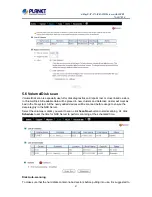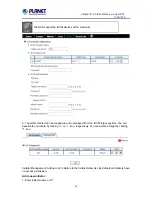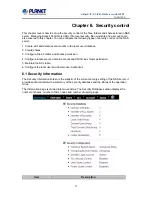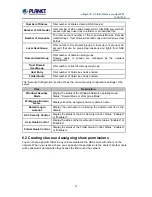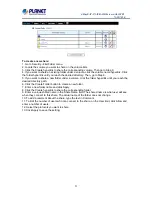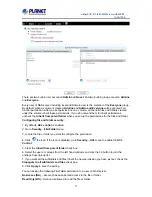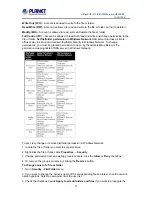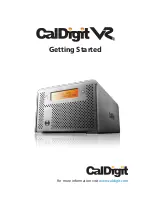
4-Bay SATA NAS RAID Server with iSCSI
NAS-7410
44
Item
Description
JBOD
Just a Bunch Of Disks.
A JBOD-type volume contains only one hard disk as its member.
RAID 0
RAID level 0 is disk striping only, which distribute data evenly over multiple disks
for better performance. It does not provide safeguards against failure. RAID level
0 uses two or more hard disks.
RAID 1
RAID level 1 uses disk mirroring, which provides 100% duplication of data. It
offers high reliability, but doubles storage cost. RAID level 1 uses two hard disks.
RAID 5
RAID level 5 distributes data and parity bits over multiple disks for both
performance and fault tolerance. A RAID volume can still work when a hard disk
fails. RAID level 5 uses three or more hard disks. Building a RAID-5 volume may
take hours depending on capacity.
RAID 6
RAID 6 (striped disks with dual parity) combines four or more disks in a way that
protects data against loss of any two disks.
RAID 10
RAID 1+0 (or 10) is a mirrored data set (RAID 1) which is then striped (RAID 0),
hence the “1+0” name. A RAID 1+0 array requires a minimum of four drives – two
mirrored drives to hold half of the striped data, plus another two mirrored for the
other half of the data. In Linux, MD RAID 10 is a non-nested RAID type like RAID
1 that only requires a minimum of two drives and may give read performance on
the level of RAID 0.
Write-Once
Volume
When setting a Write-Once volume, you are not allowed to erase or change what
you have written on this volume. This setting CANNOT be reverted in any
situation, please think it twice before you enable it.


















